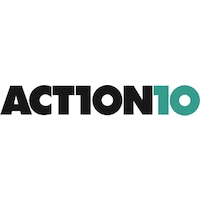Action10 is a Swedish non-profit, non-religious and non-political membership organisation operating on a voluntarily basis and with charity funding. The vision of Action10 is a world free from extreme poverty, where everyone has access to education, employment, healthcare and social security as well as safe water, food, sanitation and energy. Countries are run by good governance and have sustainable economy. To pursue its vision the mission of Action10 is to be an independent initiative with a broad and flexible mandate to work with stakeholders and partners on projects and programs that address international development. Action10 operates in a sustainable, effective and efficient manner, through its unique strategy SEEDS (Sustainable Effective Efficient Development Strategy) The over-arching value platform of Action10 is that it is the Government at the macro level and the Civil Society Organsisations and the individual extreme poor at the micro level, who are the experts on the actions to be taken, and who have the capacity and knowledge to drive the development processes forward. But that the environment and the infrastructure where they operate hinder the process. The aim of the Action10 approach is therefore to offer support to Governments and to the extreme poor addressing the infrastructural and financial challenges to eradicate extreme poverty. It is the dreams of the extreme poor which is the core of the Action10 approach. Those dreams constitute the vision of each program. The mission is what needs to be done to address these dreams. After having identified the dreams the Action10 approach compiles the challenges that the extreme poor face. Those challenges describe the reasons for why they cannot reach their dreams. We call the compilation of challenges Outcome challenges. Linked to each Outcome challenge is a Progress marker. The purpose of the Progress markers is to enable evaluation planning of the program activities. Thus the Progress markers are well defined indicators which can be easily monitored and assessed. The Outcome Challenges also define the Strategy Map. The Strategy Map is a set of concrete activities that must be addressed to reach the dreams. The concept of Outcome Challenges, Progress Markers and Strategy Map were initially invented by Earl, Carden et al. in 2001 and are components of the Outcome Mapping tool. After the Strategy Map has been defined, a sustainable economy scheme is developed. The Programs are either a social enterprises or components of the national development program. A social enterprise shall generate revenue which covers all program costs, as well as pays company tax in the country of operation. If no revenue can be expected short term, which can be the case with for example basic education or social security programs, then the program is funded as a component of the national authorities development program. A crucial component is also that all partners have strong enough institutional capacity to manage the programs. Each partner are encouraged to annually assess and their own institutional capacity. Action10 is offering tools for the assessment as well as training and coaching on finance administration and accounting. All of the above aspects are, in the Action10 approach, subjected to real-time evaluation planning (EP). Action10 has developed a tool for the EP wich contains five steps. The first measures to what extent the progress markers have been achieved, the second the operational aspects, the third the strategy, the fourth the sustainable economy and the fifth the institutional capacity. The United Nations states that in 2013 1.2 billion people still live in extreme poverty. Extreme poor have been defined by the UN as those people earning an income of less than $ 1.25 per day. UN states that the Millennium Development Goals which were identified and agreed on in year 2000 by 197 heads of states and which were to be achieved in 2015, are far from being reached. The Action10 approach benefits from the lessons learnt from previous international aid programs. Through an analysis of previous aid programs, Ten Actions were identified which, if addressed thoroughly in all development programs, are expected to reduce and eventually eradicate extreme poverty. All the Ten actions are thoroughly captured in all Action10 activities. Our Ten Actions are based on these 10 principles; 1. Needs driven program 2. Equal partnership 3. Real time evaluation planning 4. Strategic partnership 5. Institutional capacity 6. Sustainable economy 7. Quality values 8. Resilience 9. Knowledge sharing 10. Visibility




